INDIA'S AGONY
India divided: An imperialist spirit within a nation state
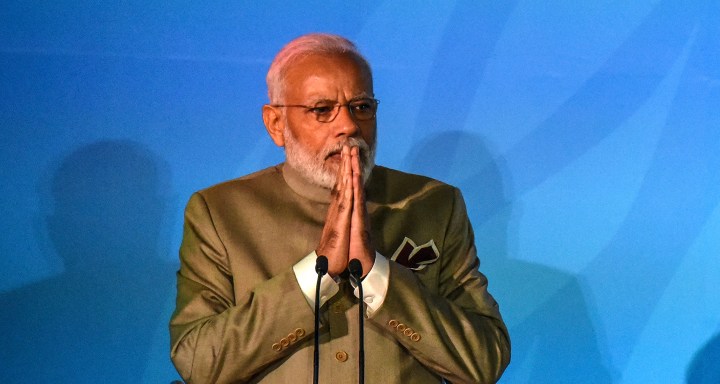
The global advance of ethnonationalism holds that a nation belongs more to its dominant section than to everyone. By its logic, the US belongs to its whites, India to its Hindus, China to its Hans, and so forth. This is hardly a novel idea for South Africans, whose country was under ethnonationalism’s bitter sway until the early 1990s.
Because of the size and skills of its domestic population India is a global force. Inevitably, trends inside India will affect the world. In its turn, the world influences India. People of Indian origin living in dozens of other lands, adding up, at present, to an estimated 35 million, may have a part in the future of the “mother” country even as they deepen ties to their country of domicile.
Inevitably and appropriately, people of Indian origin are becoming South African, American, Canadian, Australian, British, Portuguese, German, whatever. Meanwhile, Hindutva or Hindu nationalism is on the rise in India and apparently also among Hindus living elsewhere.
This conforms to the global advance of ethnonationalism, which holds that a nation belongs more to its dominant section than to everyone. By its logic, the US belongs to its whites, India to its Hindus, China to its Hans, Iran to its Shia, Turkey to its Sunnis, Afghanistan to its Pashtuns, Myanmar to its Buddhists, and so forth.
This is hardly a novel idea for South Africans, whose country was under ethnonationalism’s bitter sway until the early 1990s.
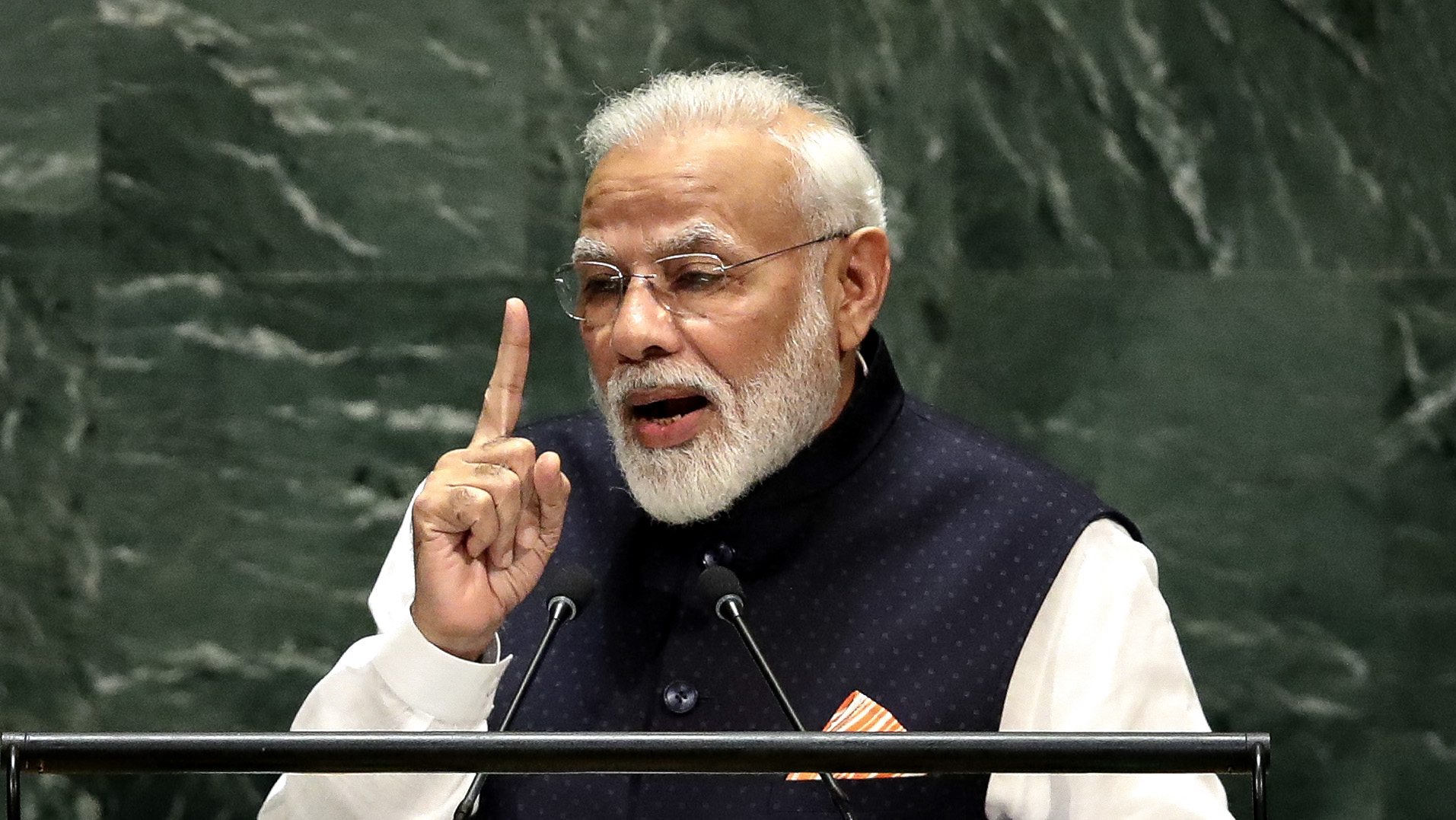
Prime Minister of India Narendra Modi addresses the United Nations General Assembly at UN headquarters on 27 September 2019 in New York City. (Photo: Drew Angerer / Getty Images)
Donald Trump in the US, Narendra Modi in India, Recep Tayyip Erdoğan in Turkey, and Jair Bolsonaro in Brazil are among the well-known symbols of ethnonationalism’s growth. In each affected country that growth has been accompanied by a decline in the autonomy and energy of democracy’s institutions.
Legislatures, courts of justice, the media, universities, police forces, investigative and prosecuting agencies, even the military, all seem to suffer. Ethnonationalism may therefore also be defined as an imperialist spirit within a nation state.
In India, the assault on democracy’s institutions is conspicuous. It has been accompanied, moreover, by a tide of ill will against religious minorities, especially Muslims, Christians and Sikhs.
Less discussed, but just as sobering, is the creation in India of a new landscape or architecture, and the injection into the popular mind, and in schools and colleges, of a new history.

Ayodhya city, Uttar Pradesh. Prime Minister Narendra Modi laid the foundation stone of Ram Temple in Ayodhya on 5 August 2020. (Photo: EPA-EFE / Prabhat Kumar Verma)
On 5 August 2020, on a ground in the town of Ayodhya in the state of Uttar Pradesh, Prime Minister Modi laid a 40kg slab of silver to start the construction of a magnificent temple to Lord Ram (or Rama). The slab laying was the centrepiece of a ceremony that was telecast and re-telecast to hundreds of millions.
The ground on which that act was performed was where a historic mosque had stood for 464 years – from 1528 until its demolition by pro-Hindutva activists in 1992. After laying the foundation stone Modi claimed that the temple’s launch was as important as India’s independence on 15 August 1947. The 5 August date, he claimed, would become as famous as 15 August.
In November 2019, India’s Supreme Court had concluded that the mosque’s demolition was unlawful. It also declared as unlawful the secret insertion of Hindu idols in that mosque in December 1949. On that occasion, 72 years ago, instant propaganda had passed off the surreptitious insertion as “a miraculous manifestation” and conclusive proof that in 1528 a Ram temple had existed before it was replaced by a mosque.
However, the Supreme Court awarded the Ayodhya site to the Hindus, who claimed it for a Ram temple, which is now being erected.
This Ram temple will become a symbol of what has already been launched in all but name: a new Hindu republic of India.
Begun on what was obviously identified as an auspicious date, this splendiferous structure, intended to define the new republic, is thus rising on two morally shaky foundations: the deception of 1949 and the vandalism of 1992.
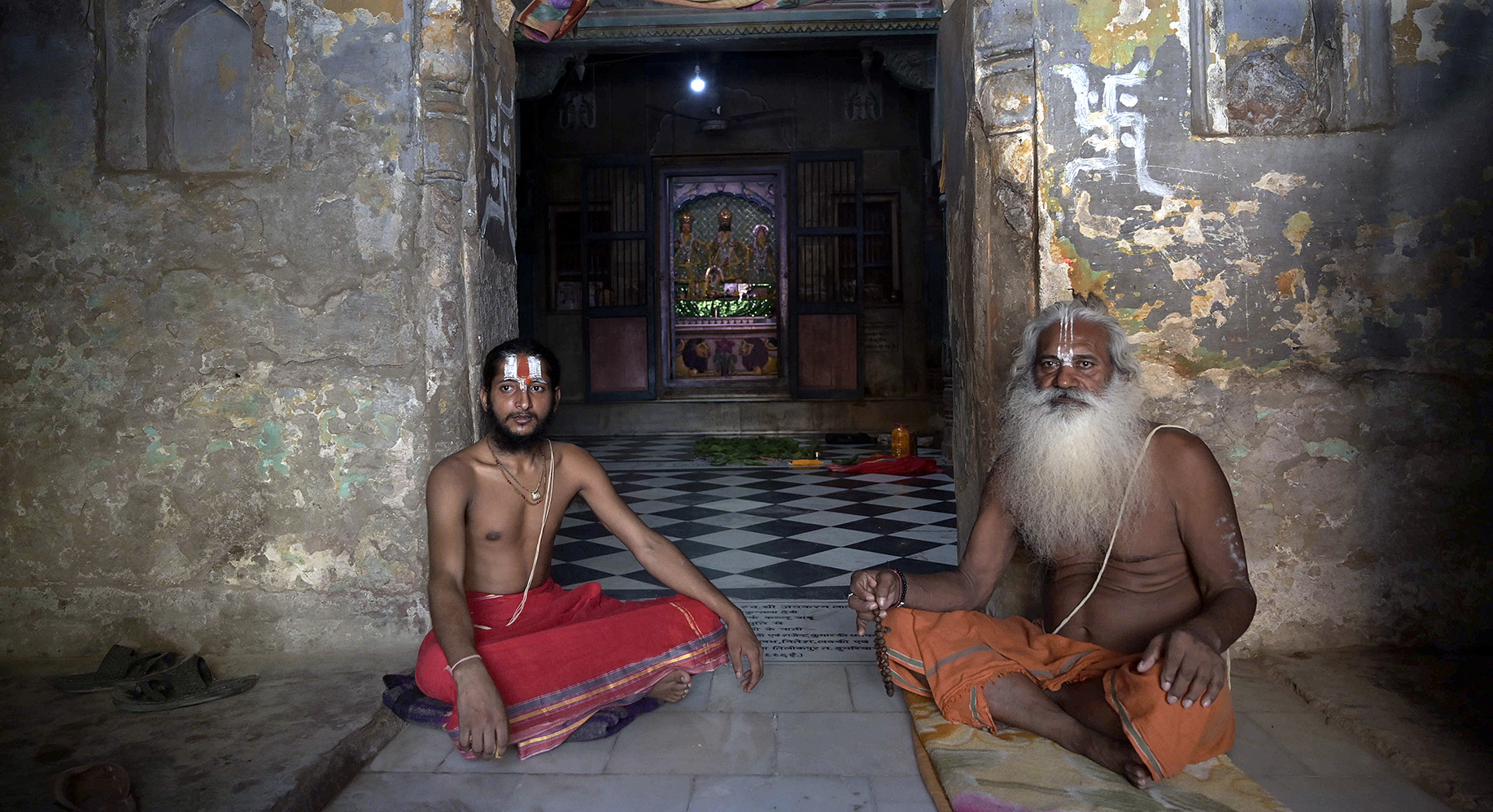
Indian holy men pray in Ayodhya, Uttar Pradesh, India on 4 August 2020, the day before Prime Minister Narendra Modi laid the foundation stone of Ram Temple. (Photo: EPA-EFE / Prabhat Kumar Verma)
For its supposed efficacy, the 5 August date had been selected a year earlier for another significant intervention. That was the date when, by sudden executive action and without consulting a single Kashmiri, the Modi government gutted Article 370 of the Indian Constitution, which for seven decades had guaranteed autonomy to the state of Jammu and Kashmir, India’s sole Muslim-majority state.
If ethnonationalism is an imperialist drive within a nation state, this was a perfect example.
Its character was underscored on 27 October 2020, when India’s Home Ministry announced the removal of Kashmiri laws going back to the pre-independence era (when a Hindu maharaja ruled Kashmir) that barred non-Kashmiris from buying land in the state. The removal of the laws opens the door to demographic changes.
Central to the rewriting of Indian history is the slogan, “1,200 years of slavery”. This mantra evokes a supposedly dark and continuous era which ended, it is asserted, when Modi and his Hindutva associates ascended to power.
Until then, according to this claim, India was ruled by the Sultanate, the Mughals, the British and the Congress, in that order, all of them un-Hindu, or not exclusively Hindu, and therefore, in the Hindutva view, un-Indian.
Hindutva asserts that now, after almost an eternity, the Hindu majority has finally come into its own. And it has picked up the thread left by a vanished Golden Age which the initiators of 1,200 years of enslavement had destroyed.
To Hindutva believers, it does not matter that the India which, in the 11th and 12th centuries, saw raids from Central Asia and the start of the Sultanate, was an unstable aggregate of feuding parts, not a single kingdom, let alone a golden one. Also, they refuse to acknowledge that, unlike later British rulers, the Sultans and the Mughals made India their home, with many of them marrying Hindu princesses.
Or that the India the British conquered in the 18th century had become, after more than two centuries of Mughal rule, a vacuum waiting to be filled, even if a nominal Mughal throne remained in Delhi.
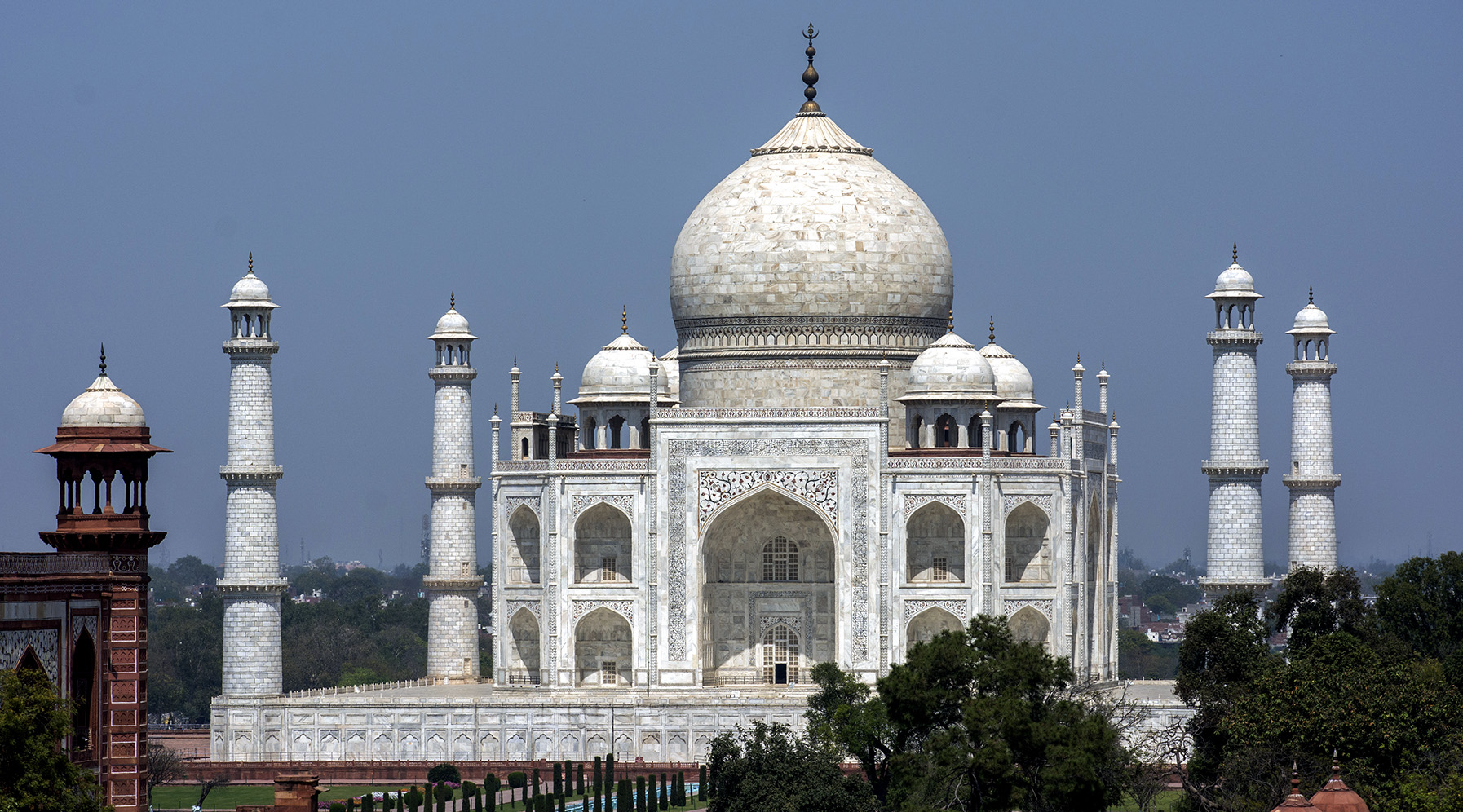
The historic monument Taj Mahal. (Photo by Yawar Nazir / Getty Images)
In the Hindutva perspective, “foreigners”, not Indians, built, among other monuments, the Taj Mahal, although, conceding the Taj’s appeal, some Hindutva writers want the world to believe that Shah Jahan merely gave a new name to what was once a Hindu palace.
There is a clear purpose for the “1,200 years of slavery” mantra. It seeks to establish that the country’s 200 million Muslims – the number is worth a pause – are not Indians, at least not authentic ones.
India’s diverse and distinguished diaspora
In the US, the daughter of one modern immigrant from South India is more than an authentic American; she is only a heartbeat away from the presidency. In India, however, descendants of those who entered India 11 centuries ago, and descendants of Indians who became Muslim then or not long thereafter, are questionable citizens.
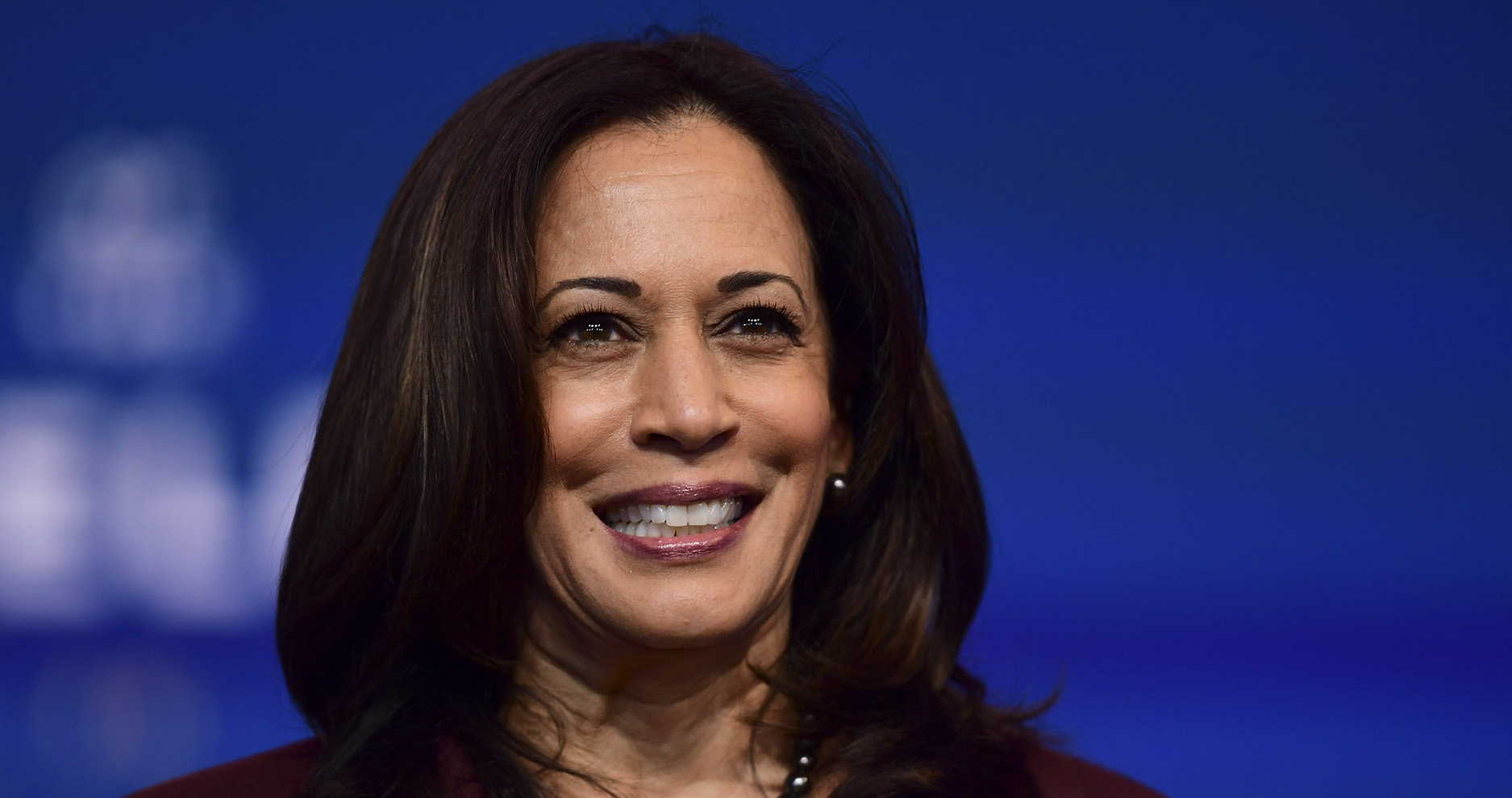
United States vice president-elect Kamala Harris. (Photo: Mark Makela / Getty Images)
This Hindutva position is absurd and inconsistent and violates global norms and the Indian Constitution. It is also an assault on the dignity of Muslims. But it is approved in today’s India by many Hindus who are excited about US Vice-President-elect Kamala Harris.
She is hardly the only person of Indian or South Asian origin to make a mark on America, where I am based. In recent months Covid-19 and the response it requires has brought to constant American attention the role played by health professionals who are connected to South Asia – Hindus, Muslims, Christians, Sikhs and others.
The four individuals I will mention exemplify many others.
Before Joe Biden took her on his Covid task force, Dr Celine Gounder, born to a Tamilian father and a French mother, had been answering for months, on TV, the questions Americans were asking about the virus. Though her father had imagined Celine as a computer engineer, she became a molecular biologist and an epidemiologist, and among other things helped Guinea’s fight against Ebola.
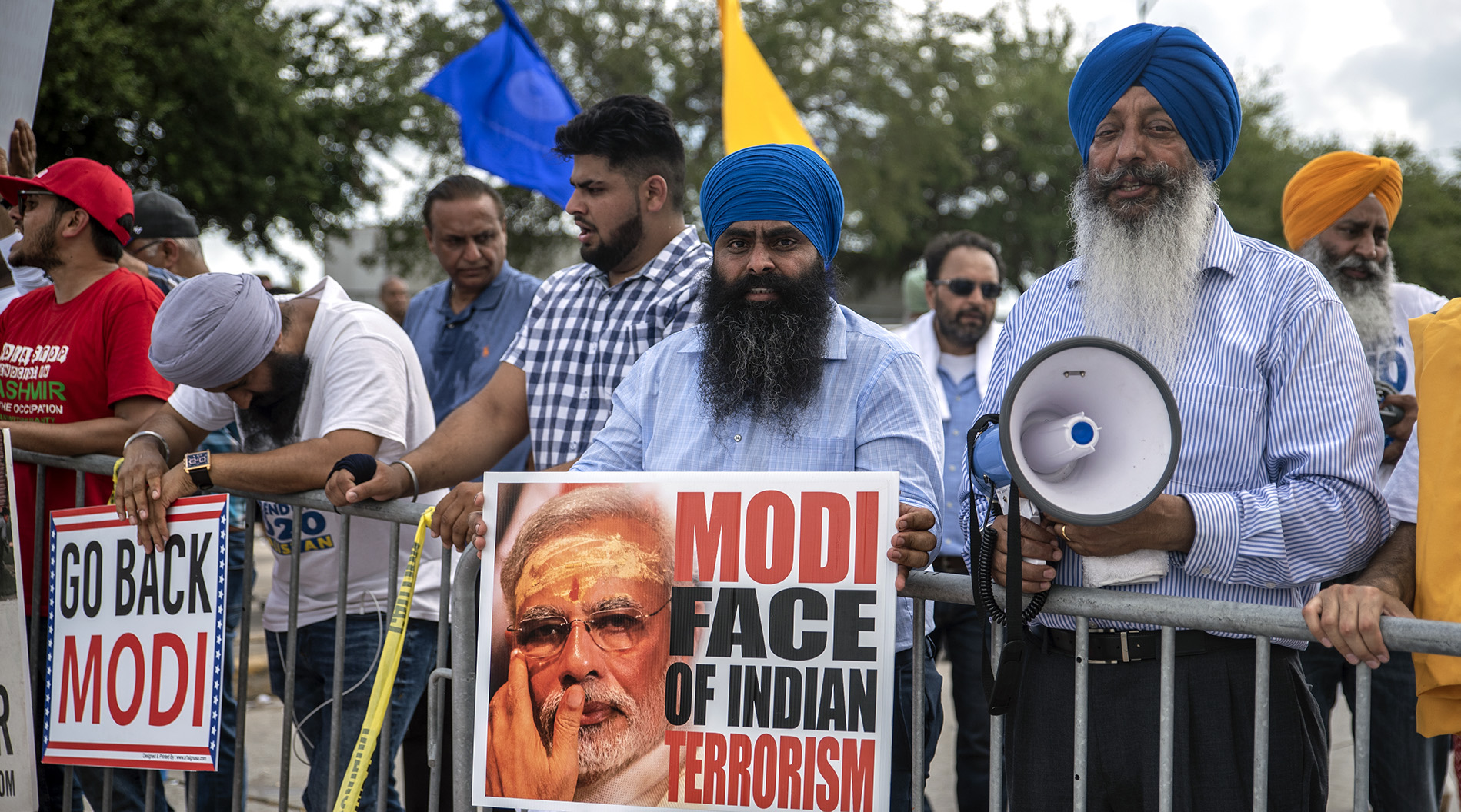
Protesters outside a rally attended by Indian Prime Minister Narendra Modi at NRG Stadium on 22 September 2019 in Houston, Texas. The rally, which US President Donald Trump attended, came before Modi’s trip to New York for the United Nations General Assembly. (Photo: Sergio Flores / Getty Images)
The Maharashtrian parents of Dr Atul Gawande, also a member of Biden’s public health team, were both doctors who came to the US. A surgeon in New York and a brilliant author as well, Atul won fame in the US long before Covid. He is seen as a doctor-writer who remains sharply conscious of the needs of America’s underprivileged, who, the world should be reminded, number in many millions.
Born in a village in Bihar’s Madhubani district, Dr Ashish Jha is a practising physician and health policy guru who heads Brown University’s School for Public Health. Even more regularly than Gounder, he clarifies Covid issues for Americans. The cable channels CNN, MSNBC and Fox serve sharply different audiences, but all three want to present this expert’s opinions.
Dr Seema Yasmin is a UK-born scientist and communicator whose mother was raised in India. After mother and daughter moved to the US, Seema, who is based in California, studied Ebola and other public health questions. Thanks to her answers around Covid, Yasmin too has become familiar to Americans.
These four are among the tens of millions of Indians living on continents outside India. They are Indian and part of humanity. If asked, “who are your people?” they would offer a wide range of answers.
One thing seems clear. Neither India’s size nor the enhanced world presence of Indians will translate into a respected global role if India’s citizens are divided into two portions, one authentic and the other second class. South Africa, the US and Canada are not the only nations resisting the idea of grading citizens by race, caste or religion.
The appeal of the wider world is acknowledged even by champions of a Hindu-dominated India. In this outer world, humanity is steadily, if also with ups and downs, discovering its commonness and its need for equality.
Eventually this will happen inside India, too. As a long-term proposition, a Hindu Republic of India will disillusion Indians. Moreover, a disappointed world will think poorly of such an India.
Even though Indians outside India are deepening their identification with the country they live in, joining struggles for equality and partnership, they can also play a role in the battle to preserve India as a nation for all, an India that belongs as much to a Muslim, a Christian, a Sikh, an Adivasi, a Dalit or an atheist as to a high-caste Hindu.
In an earlier era, overseas Indians played a powerful part in the battle for Indian independence. Today, people of Indian origin who want to see liberty, equality, fraternity and dignity around them in their new homelands must play their part in the battle to protect the human spirit in India. DM/MC
Rajmohan Gandhi is an Indian historian. He is a biographer and a research professor at the Center for South Asian and Middle Eastern Studies, University of Illinois at Urbana-Champaign, US. He is the grandson of Mahatma Gandhi and Chakravarti Rajagopalachari.










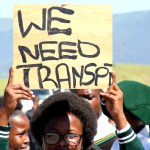







 Become an Insider
Become an Insider
A South African paper, posting an article full of selective facts and FUD (Fear, Uncertainty, Doubt) by an American, about India, vaguely relating it to South Africa to make it seem relevant to us. This is the level Daily Maverick has proudly sunk to.
A breathtaking and global perspective of a complex issue. The cynical comment hereunder notwithstanding. As one was born in India, but having lived a lifetime in South Africa, let me commend DM for providing the space for this reflexive and considered reflection on an important matter.